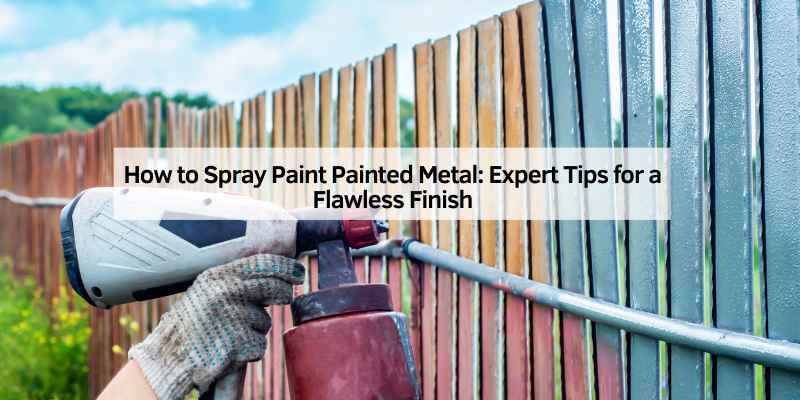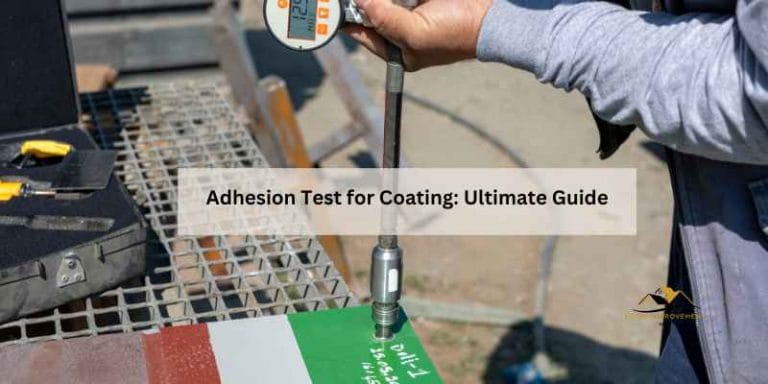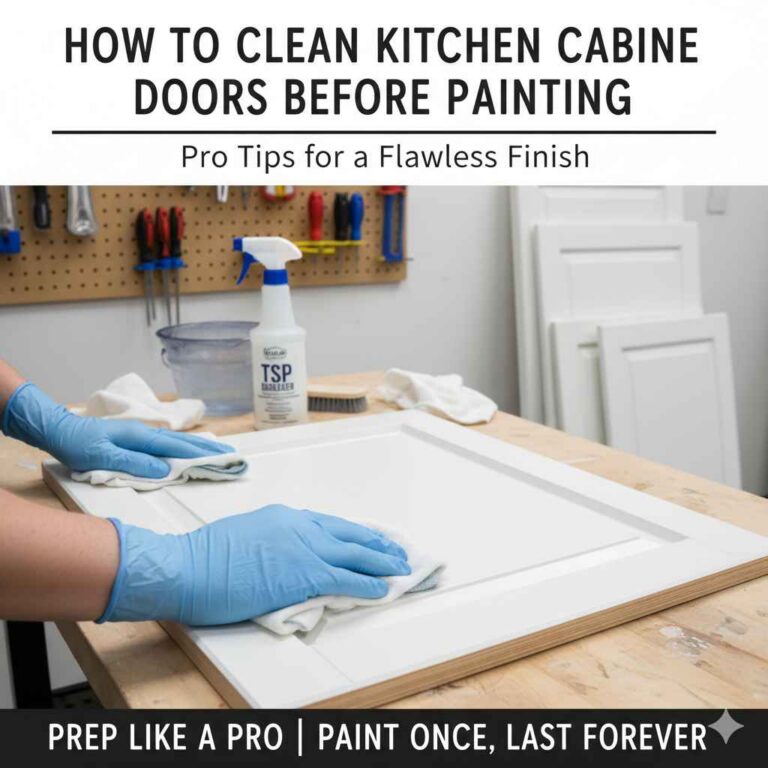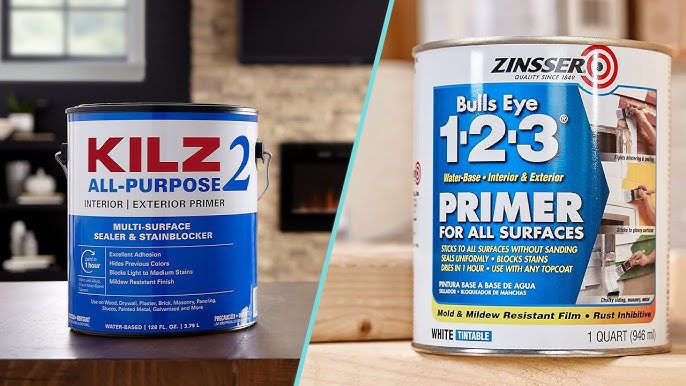How to Spray Paint Painted Metal: Expert Tips for a Flawless Finish
To spray paint painted metal, start by cleaning the surface thoroughly, sanding it lightly, and applying a primer before using the spray paint. This will ensure better adhesion and a smooth finish for your project.
Furthermore, make sure to choose a paint specifically formulated for metal surfaces and follow the manufacturer’s instructions for application and drying times. By following these steps, you can achieve a professional and long-lasting spray paint finish on painted metal.
Choosing The Right Spray Paint
Consider The Type Of Metal Surface:
Before selecting a spray paint, evaluate the metal surface thoroughly for rust, existing paint, or any imperfections.
Selecting The Appropriate Paint Type:
Choosing the correct paint type based on the metal’s composition is vital for a successful painting project.
Preparing The Metal Surface
Preparing the Metal Surface is an essential step when it comes to spray painting painted metal. By taking the time to clean, sand, and prime the surface, you can ensure that the paint adheres properly and achieves a smooth, professional finish. In this section, we’ll discuss the necessary steps to prepare your metal surface for spray paint.
Cleaning The Surface Thoroughly
Before you begin any painting project, it’s crucial to clean the metal surface thoroughly. This will remove any dirt, grease, or rust that could interfere with the adhesion of the paint. Use a mild detergent and water to wash the surface, and make sure to rinse it thoroughly afterward. You can also use a degreaser to remove any stubborn grease or oil stains. Once the surface is clean, allow it to dry completely before moving on to the next step.
Sanding And Priming For Better Adhesion
To ensure that the paint adheres properly to the metal, it’s important to sand the surface before painting. Use a fine-grit sandpaper to gently roughen up the painted metal. This will create a slightly rough texture that will help the paint adhere better. After sanding, wipe away any dust or debris with a clean cloth.
Once the surface is sanded, it’s time to apply a primer. Priming is especially important when painting over existing paint, as it helps to create a smooth, even surface for the new paint. Choose a primer specifically designed for metal surfaces and apply it in thin, even coats. Allow each coat to dry fully before adding the next. Not only will priming improve adhesion, but it will also help to prevent any rust from forming.
By thoroughly cleaning, sanding, and priming the metal surface before you start spray painting, you’ll ensure that your paint job looks professional and lasts for years to come.
Setting Up A Proper Workspace
When spray painting painted metal, it’s crucial to set up a proper workspace that ensures safety and efficiency. Setting up a suitable environment will help you achieve optimal results and protect the surrounding area from potential damage.
Choosing A Well-ventilated Area
To protect your health and ensure proper ventilation, choose a well-ventilated area for spray painting. This could be an outdoor space with open air circulation or a properly ventilated indoor area with exhaust fans. Proper ventilation is crucial to prevent the inhalation of harmful fumes and ensure a smooth application of the spray paint.
Protecting Surrounding Objects
Before beginning the spray painting process, it’s essential to protect surrounding objects from overspray. Use drop cloths or plastic sheeting to cover nearby items and surfaces that you don’t want to be painted. This will prevent accidental damage and make the cleanup process much easier.
Applying The Spray Paint
When it comes to applying spray paint to painted metal, the technique and method used plays a significant role in achieving a smooth, even finish. Regardless of whether you’re refreshing an old metal surface or adding a new coat of paint, the way you apply the spray paint can make a notable difference in the overall outcome.
Techniques For Even Coverage
One effective technique for achieving even coverage when spray painting metal is to maintain a consistent distance between the can and the surface. Holding the can approximately 6 to 8 inches away and moving it in a steady back-and-forth motion helps distribute the paint evenly. This method prevents an excessive buildup of paint in one spot and reduces the likelihood of uneven coverage.
Additionally, it’s essential to overlap each spray pass slightly to avoid leaving gaps and ensure that the entire surface is adequately covered. This overlapping technique promotes a uniform and professional-looking finish.
Avoiding Drips And Runs
To prevent drips and runs when spray painting metal, it’s crucial to apply thin, multiple coats rather than a single heavy coat. Thin coats minimize the risk of the paint pooling and dripping, leading to a smoother and more consistent finish. Be patient and allow each coat to dry before applying the next one, as rushing the process can result in uneven application and potential drips.
It’s also advisable to avoid spraying too close to the surface, as this can cause the paint to accumulate and run. Maintaining the recommended distance, as mentioned earlier, is key to avoiding drips and runs while ensuring a professional-quality outcome.
Drying And Curing Process
When spray painting painted metal, the drying and curing process is crucial to achieving a professional and durable finish. This process involves allowing sufficient drying time and then curing the paint for the best durability. By following these steps, you can ensure your spray paint job on painted metal will look great and last for a long time.
Allowing Sufficient Drying Time
To achieve the best results when spray painting painted metal, it’s important to allow sufficient drying time between coats and after the final coat. This ensures that the paint is fully dry before moving on to the next step.
The drying time can vary depending on the type of paint and the environmental conditions. As a general rule of thumb, it’s recommended to wait at least 24 hours between coats. However, if you’re working in a humid environment or using thicker coats of paint, you may need to wait longer to ensure proper drying.
Keep in mind that rushing the drying process can result in the paint not adhering properly and may lead to a less durable finish. Patience is key when it comes to allowing sufficient drying time for your spray paint job on painted metal.
Curing The Paint For Best Durability
After the paint has fully dried, the next step is to cure it to ensure the best durability. Curing refers to the process of allowing the paint to harden and reach its maximum strength.
One way to cure the paint is by letting it cure naturally over time. This method typically involves waiting for about a week after the final coat before subjecting the painted metal to any heavy use or harsh conditions. This allows the paint to fully bond and harden, resulting in a more durable finish.
Another option is to use heat to speed up the curing process. You can do this by placing the painted metal in a well-ventilated area and using a heat source such as a heat gun or oven on a low setting. However, be sure to follow the manufacturer’s instructions and exercise caution to avoid damaging the painted surface.
By allowing sufficient drying time and properly curing the paint, you can ensure that your spray paint job on painted metal will be long-lasting and able to withstand various weather conditions and everyday wear and tear.
Troubleshooting Common Issues
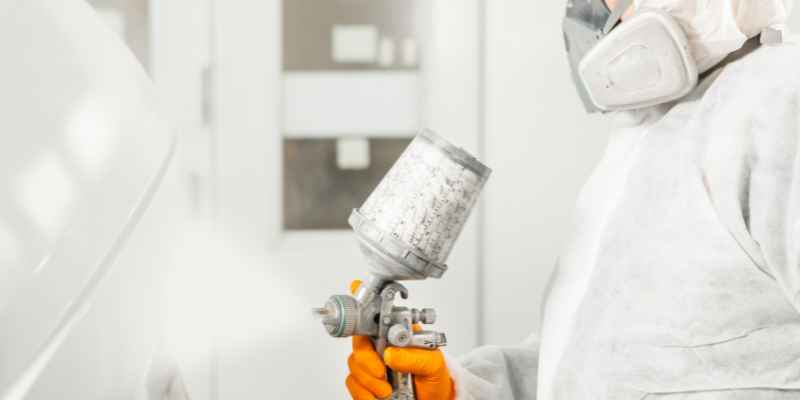
Spray painting painted metal can sometimes result in common issues that may affect the overall finish. It’s important to know how to address these issues effectively to achieve a professional result.
Fixing Uneven Coverage
- Ensure even spraying motion with consistent speed.
- Apply thin coats at a time for uniform coverage.
- Hold the spray can at the recommended distance from the surface.
- If uneven coverage occurs, sand the surface lightly before re-spraying.
- Consider using a primer for better adhesion and coverage.
Dealing With Paint Drips
- Avoid over–spraying to prevent drips.
- Check for drips regularly during painting process.
- If drips occur, wait for the paint to dry before sanding them off.
- Sand the affected area lightly and reapply paint if needed.
- Maintain consistent distance and speed when spraying to prevent drips.
Finishing Touches
Discover the secrets of achieving a flawless spray-painted finish on painted metal. This comprehensive guide will walk you through the process, providing expert tips and techniques for achieving professional results every time.
In spray painting painted metal, the finishing touches are crucial for a professional and long-lasting result. These final steps will enhance the aesthetic appeal and durability of your project. `
Applying A Clear Coat For Protection
Protect your painted metal surface by applying a clear coat to shield it from weather elements and prevent rusting.
Steps for applying a clear coat:
– Clean the surface thoroughly.
– Spray an even layer of clear coat.
– Allow it to dry completely for optimal results.
Polishing For A Professional Look
Polishing your painted metal can elevate its appearance to a professional level.
Polishing tips:
1. Use a gentle polishing compound.
1. Rub in a circular motion for even results.
1. Buff the surface to a shiny finish.
By following these guidelines, you can achieve a flawless finish on your spray painted metal project.
Maintenance And Care
Proper maintenance and care for painted metal surfaces are essential to ensure their longevity and aesthetic appeal. By following a few simple steps, you can keep your spray-painted metal looking fresh and vibrant for years to come.
Cleaning Painted Metal Surfaces
Regular cleaning is key to preserving the appearance of painted metal surfaces. Use a mild detergent and water solution to gently wash the metal, and avoid harsh abrasives that could damage the paint. A soft sponge or cloth can be used to wipe away dirt and debris without scratching the surface. Thoroughly rinse the metal with clean water and ensure it is completely dry before applying any touch-up paint or protective coatings.
Ensuring Longevity Of The Finish
Protecting the finish of the painted metal is crucial for maintaining its beauty and durability. Consider applying a clear sealant to provide an extra layer of protection against the elements and prevent chipping or fading. Regularly inspect the surface for any signs of wear and tear, and address any issues promptly to avoid potential corrosion or further damage.
Frequently Asked Questions On How To Spray Paint Painted Metal
What Are The Best Practices For Preparing The Metal Surface Before Spray Painting?
To ensure a smooth finish, start by cleaning the surface with a degreaser. Sand the metal lightly to create texture for the paint to adhere to. Apply a primer specifically made for metal to prevent rust and create a base for the paint.
How To Choose The Right Type Of Spray Paint For Painted Metal?
When choosing spray paint for painted metal, opt for a high-quality metal-specific paint that offers rust resistance. Look for spray paints formulated for outdoor use and designed to withstand harsh environmental conditions. Consider the color and finish that best suits your project for a professional-looking result.
Can I Use Any Spray Paint On Painted Metal Or Are There Specific Types To Avoid?
Avoid using general-purpose spray paints on painted metal, as they may not adhere properly or offer sufficient protection against rust and weathering. Always opt for a paint specifically formulated for metal surfaces to ensure durability and a long-lasting finish.
Conclusion
To master the art of spray painting painted metal, follow these essential tips and tricks. Prepare the surface by cleaning, sanding, and priming it for optimal adhesion. Choose the right type of spray paint and apply it in thin, even coats, allowing each layer to dry before proceeding.
Take your time, employ proper techniques, and you’ll achieve a flawless, long-lasting finish that will revitalise any metal surface. Happy spraying!

